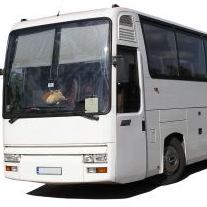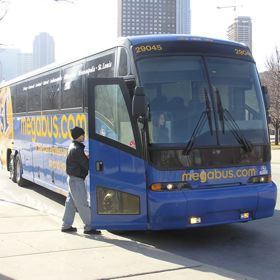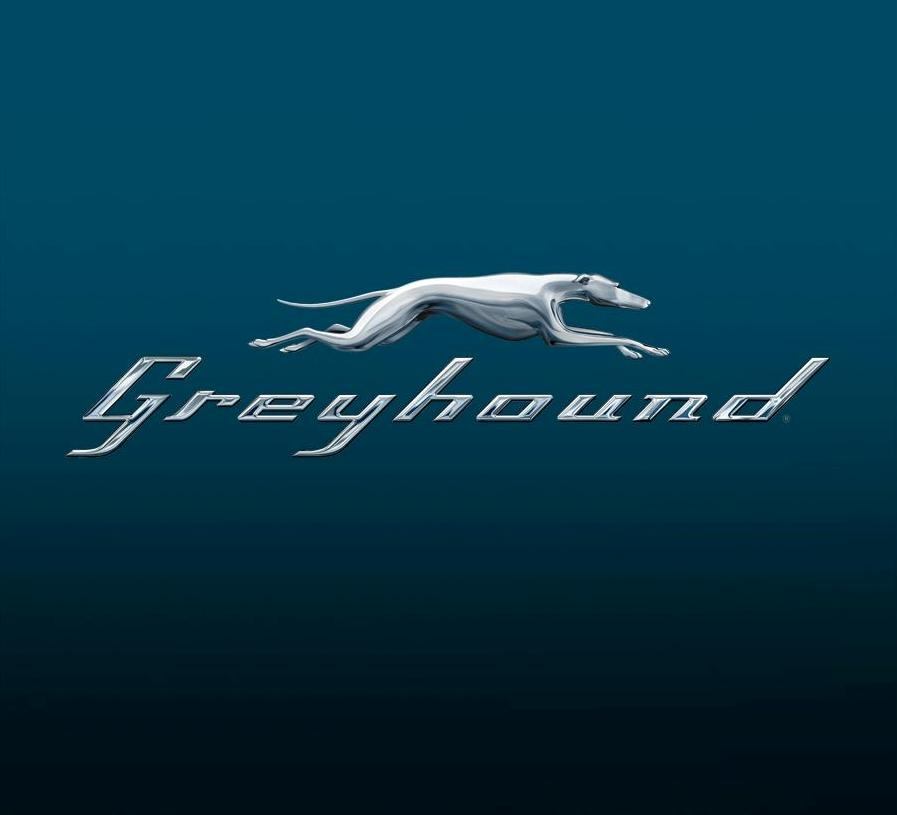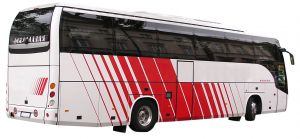Travel News
Buses Keep on Truckin’
 Chances are, you returned from your Memorial Day weekend with an aching pain in your side. Too many hot dogs?
Chances are, you returned from your Memorial Day weekend with an aching pain in your side. Too many hot dogs?
More likely it’s the pinch in your wallet.
With weekend gas prices averaging at $3.203 a gallon (up more than 6 percent from last year, according to Gasbuddy.com), you would think travelers would be deterred from starting their engines.
Not so, according to an AAA forecast last week, which projected that a whopping 37.6 million Americans would travel 50 miles or more over the holiday weekend.
That’s up 1 percent from last year, and more than 80 percent of those travelers were planning on taking road trips. The final numbers of just how many people did make the trip this past weekend has yet to be seen, but if traffic is any indication, travelers were certainly out and about.
Now that the requisite weekend holiday getaway is over, why not consider cheaper, more fuel-efficient ways to travel in the coming months?
Long-distance buses, for the most part, are maintaining their normal prices despite increasing fuel costs, and in some cases, they’re offering deals that can’t be beat by any other mode of transportation.
Megabus
 Last summer, we saw the introduction of Megabus.com, a long-distance Midwestern bus carrier that can cost as little as $1.50 round trip. No, that’s not a typo.
Last summer, we saw the introduction of Megabus.com, a long-distance Midwestern bus carrier that can cost as little as $1.50 round trip. No, that’s not a typo.
The new service launched in April 2006, with non-stop routes between Chicago and Cincinnati, Cleveland, Columbus, Detroit, Indianapolis, Milwaukee, Minneapolis, and St. Louis. In the past few months, the service has expanded to five more Midwestern cities: Kansas City, Ann Arbor, Pittsburgh, Columbus, and Louisville.
Megabus fares really do start at $1 (plus a 50 cent booking fee), and can climb up to about $55 round trip — the price is based on availability, and as seats fill up, prices increase. If you can book your tickets in advance, chances are you may find roundtrip rates at just a few dollars apiece… a far better deal than you’re going to find with other bus systems, trains or airlines.
Having just completed its first year of operation, Megabus shows no signs of slowing down– in the past year, it has carried more than 375,000 passengers.
So how can Megabus afford to sell such low-priced tickets?
“We don’t have the infrastructure that other companies have,” explains Dale Moser, President and COO of Coach USA, which runs Megabus. “Because we’re internet based, we don’t need terminal facilities that require a full staff and a lease. We have a lower overhead, and we can pass on those savings to the customer.”
Megabus operates out of Chicago, where it departs from Union Station, but its other stops include universities, transit locations and other points that are “very accessible, safe and visible.”
But with such low fares, might you be getting exactly what you pay for? What about cleanliness, safety and reliability?
“That’s all covered,” assures Moser. “We’re one of the largest transportation companies in the U.S., so we’re reviewed constantly by state and federal organizations.”
Moser also points out that there are few other options in the Midwest in terms of efficient and affordable bus or train service… in fact, the biggest competition is “getting people out of their automobiles.”
More than 50% of his customers have said that they would have taken the same journey by vehicle, but expressed that they’re frustrated than ever with rising fuel prices and heavy traffic. According to Moser, “If we can get 50 to 60 people out of their cars, that means fewer cars on the road, less congestion and it’s better for the environment. We’re turning people on to bus travel.”
Greyhound
 The Dallas-based corporation runs the largest intercity bus system in the United States, with a fleet of nearly 1,500 vehicles servicing 1,700 destinations. However, as of August 2004, the company has made major cutbacks that have affected about 1,000 locations across the country.
The Dallas-based corporation runs the largest intercity bus system in the United States, with a fleet of nearly 1,500 vehicles servicing 1,700 destinations. However, as of August 2004, the company has made major cutbacks that have affected about 1,000 locations across the country.
Due to an overall drop in bus travel in recent years, the company chose to increase its bottom line by focusing on the more profitable short and medium-length routes. This has directly affected several lower-income and rural neighborhoods, many of which don’t have other low-cost options for intercity travel.
Greyhound is also making some upgrades, most notably in its terminals in Chicago, Milwaukee, Minneapolis and soon Texas, which are part of a pilot program that is expected to roll out to other regions over the next few years.
These changes include wireless internet, plasma televisions, bilingual signs, improved security and overall renovations to increase seating and space in the terminals. On the coaches themselves, Greyhound regularly refurbishes its buses, and has installed more comfortable seats with lumbar support and removable armrests.
Peter Pan Trailways
 Based in Springfield, MA, this family-owned bus line serves only northeastern states. Although it has provided some competition with Greyhound in the past, the two companies actually began coordinating their operations in 1998. (Take note: Peter Pan frequently shows movies on some of its buses, Greyhound doesn’t.)
Based in Springfield, MA, this family-owned bus line serves only northeastern states. Although it has provided some competition with Greyhound in the past, the two companies actually began coordinating their operations in 1998. (Take note: Peter Pan frequently shows movies on some of its buses, Greyhound doesn’t.)
Peter Pan maintains that while it has been affected by rising fuel prices, it has not yet passed on the cost to customers. The hope is that while gas prices increase, the number of people using mass transportation will also go up. The line is also test-marketing wireless internet on its buses, and has made some improvements in terms of travel safety, including installing GPS on all of the coaches. There are currently three tiers of pricing: you’ll get the lowest fare if you book online, and a discounted rate if you purchase your ticket at the terminal in advance, and pay the highest amount if you purchase your ticket in person on the same day of travel.
When it comes to savings, it’s hard to beat bus travel on the East Coast… check out the following comparison of round-trip prices between New York and Boston, where you have the option of Amtrak, a bus such as Peter Pan or Greyhound, or Limoliner.
Airline (JFK-BOS): $148 (Delta), $1,260 (US Airways)
Amtrak (Penn Station to South Station): $136
Peter Pan/Greyhound (Port Authority to South Station): $30 (online booking only)
Limoliner (Hilton Back Bay to the Hilton NY): $158
The Washington, DC to New York route also shows how competitive bus travel is:
US Airways Shuttle (LaGuardia to Reagan National): $180
Amtrak (NY Penn Station to Washington DC Union Station): $134
Peter Pan/Greyhound: $35 (online booking)
Fung Wah Bus
Since many intercity bus riders tend to be students and other budget-minded travelers, Greyhound and Peter Pan have faced some stiff competition with Fung Wah, also known as the “Chinatown Express.” For $30, the service provides service from a street corner in New York City’s Chinatown (138 Canal Street) to Boston’s South Station.
The Fung Wah bus was launched in 1997 by Pei Lin Liang, a New York City noodle factory deliveryman who emigrated from China 12 years earlier. Liang borrowed money from relatives to buy four vans, and began shuttling Chinese immigrants between Brooklyn and Chinatown in New York; he later began a van service to Boston. Today, the line has 21 buses that operate 18 roundtrips a day between Boston and New York, with Liang often at the wheel himself.
But again, does low-cost come at the price of safety?
Although Fung Wah’s safety standards received a satisfactory mark by the Department of Transportation, in fact, a Motor Carrier Safety Administration study between 2003 and 2006 found Fung Wah to be significantly lower in the safety department than Greyhound and Peter Pan.
A situation in August 2005 also raised questions about Fung Wah’s safety standards, when a bus burst into flames on a Connecticut highway, forcing passengers off the vehicle before it was destroyed. However, this kind of situation isn’t limited to low-cost carriers: a Wisconsin-bound Greyhound vehicle caught fire outside of Chicago in February 2005, and a fatigued Greyhound driver caused a fatal crash in November of 2005. Fung Wah has stated that it has run into some safety issues because of its rapid growth, but that it is working on fixing these problems.
Limoliner
While not exactly in the same league as a traditional bus — and certainly not as low cost — Limoliner is fast becoming a popular option for business travelers not wanting to take a plane or train.
Entrepreneur Fergus McCann launched the business in October 2003 after noticing how difficult travel had become after September 11, and the decreasing level of service offered by airlines and Amtrak.
For $79 each way, Limoliner runs up to four times a day between Boston and New York City, and is designed to create a hassle-free travel experience while allowing business professionals to be productive even while they’re on the road.
The vehicle picks up and drops off at Hilton Hotels in each city (and at the Mass Pike Park and Ride Lot in Framingham, Ma.,) and offers free high-speed wireless internet, satellite TV, a travel attendant, food and beverage service (but no alcohol) and reclining leather seats… even their bathrooms are pleasant, with granite countertops and a skylight.
Want more bus info? Check out Evaluating New One Dollar Bus Fares From NYC to DC.
By Managing Editor Sarika Chawla for PeterGreenberg.com












